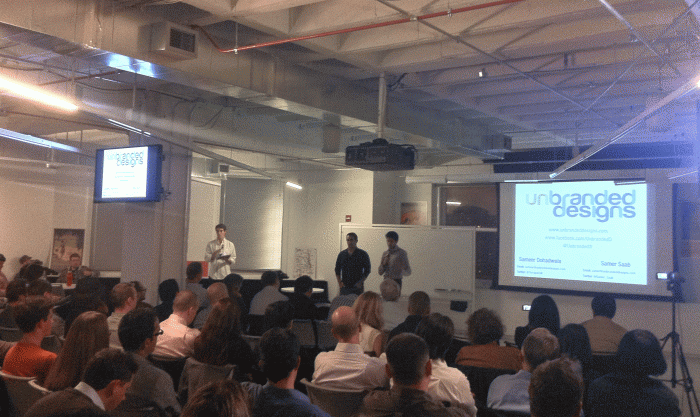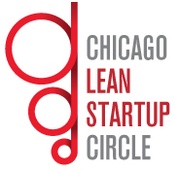

The Lean Startup Challenge is a competition designed to lead aspiring entrepreneurs on the path to success by getting them out of the office to interact with consumers and put their ideas to the test. The lean startup process rapidly accelerates development, normally resulting in multiple pivots.
Wednesday night was the culmination of the 14-week challenge. Four finalists pitched after receiving user experience tips from the Groupon Design Union and pitch coaching from Troy Henikoff, co-founder of Excelrate Labs. They also had access to KissMetrics for person-based A/B testing and Unbounce which helped them create landing pages without coding.
The challenge is not judged on standard requirements. “It’s not about who is the most fundable or who has the best ideas. It’s about who took an idea and learned the most in the market. That’s what a lean startup does: they go out and they learn,” said Todd Wyder, co-founder of the Lean Startup Challenge.
Here are some of the lessons learned by the finalists during the Lean Startup Challenge:
The winner of this years challenge was Unbranded Designs, a web-based furniture company that funds, manufacturers and sells products created by independent designers. The other startups included Care Content, Cardoona and UnWined.
Find a pain point that will attract customers
Interviews help narrow the focus and identify the pain points that will attract customers. “Without customers a business is just a cool idea,” said the Unbranded Designs team. For Unbranded Designs, this pain point was simple: design-centric people struggle to find variety and don’t have access to independent designers’ work.
Let your audience focus on what they love
In addition to providing an e-commerce platform, Unbranded Designs also takes care of manufacturing. The team said that this puts them ahead of potential competitors like Kickstarter because the Unbranded Designs platform allows designers to focus on designs, not sales.
Care Content creates customizable, patient-focused web content that helps health care organizations engage patients.
Figure out what promotional model works best for you
Care Content also used interviews to identify its initial problem. These interviews helped its team validate or invalidate assumptions and create a customer archetype. To turn these validated ideas into sales they began to work on promotion. After dabbling in guest blogging and running an in-house company blog, Care Content realized that attending trade shows was their most viable form of promotion in their marketplace. These trade shows also helped Care Content increase referrals, find new target markets and generate sales leads.
Address customers concerns
Care Content needed to create compelling content that addressed patient concerns. On the consumer side, this meant coming across as professional: research showed that potential patients use websites to judge clinical services. On the client side, addressing concerns meant creating customizable content that would save hospitals time and money. This content also needed a strong call to action to prove that it was increasing sales.
Cardoona is an online marketplace that helps restaurants save time and money while improving their relationship with food distributers.
Get out of the office
Getting out of the office helps identify concerns, gauge interest for initial ideas, inspire future pivots and recognize the real concerns within your industry. For Cardoona, this meant creating an app that helped to decrease food costs while displaying transparent pricing. “First you need to get out of the building. The answers were with our customers out where they were having the problems,” said the Cardoona team.
Connect with your customers
In addition to getting out of the office, Cardoona also built marketing sites to help gauge their customers interest. They realized that SEO and email marketing were the most successful way for them to reach the restaurants. To reach the food distributers they needed to go a totally different route and do field sales.
UnWined is an in-aisle touchscreen interface decision-making guide for wine products, making the consumers experience more enjoyable, intuitive and fun.
Improve customer experience by giving them what they want
Testing showed that consumers did not want to spend a lot of time or effort learning about wine, so they kept the interface questions simple. These tests also provided data that highlighted the features customers were looking for, enabling them to incorporate these features. Testing also showed that getting people to engage organically was one of UnWined’s biggest challenges. To overcome this they plan on employing bigger screens, more apps and different kinds of signage.
